1. Florida’s St. Johns River
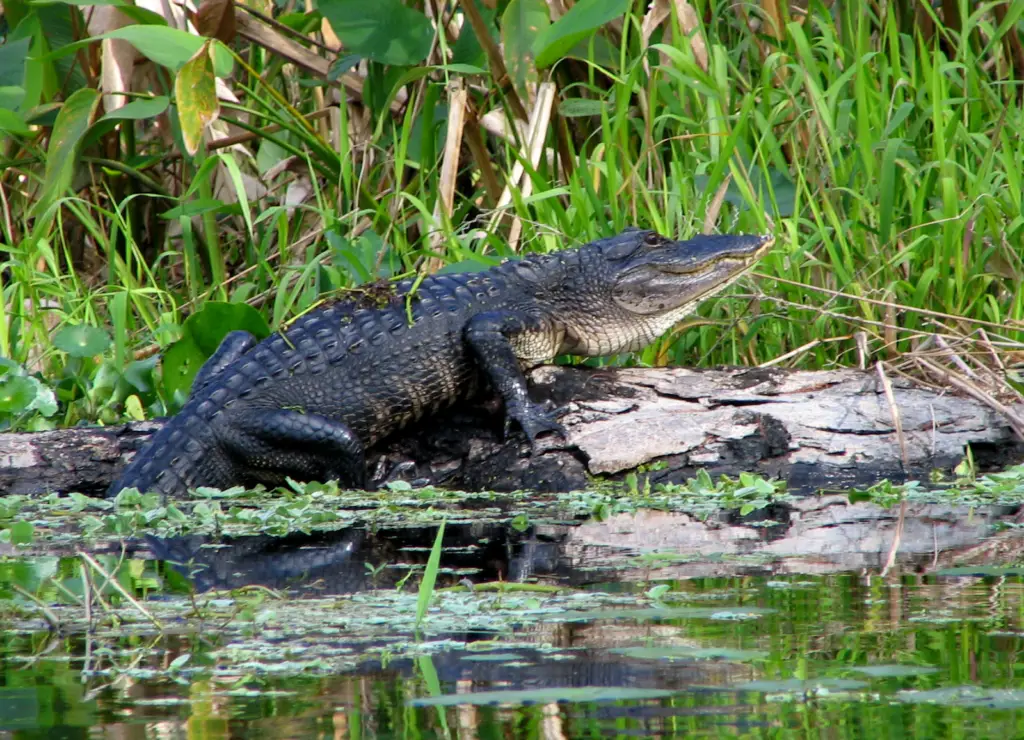
The St. Johns River in Florida is one of the longest rivers in the state, stretching over 300 miles from its headwaters near the St. Johns Marsh to the Atlantic Ocean. Its slow-moving waters, clear springs, and freshwater wetlands make it an ideal habitat for alligators. The river passes through a variety of ecosystems, including hardwood swamps, marshes, and riverine forests, where alligators are frequently spotted. Alligators are particularly abundant in the lower stretches of the river, where the water is warmer, and they can be seen basking along the riverbanks or floating lazily in the water. These reptiles thrive in the calm, sheltered environments that are abundant in the river’s many tributaries and backwaters.
The river also offers abundant food sources, such as fish, birds, and small mammals, ensuring that alligators have plenty to eat. Because of its rich biodiversity, the St. Johns River is an excellent place for alligator enthusiasts and nature lovers to visit. The river also features several protected areas, including the St. Johns River Water Management District, where alligator populations can grow without human interference. According to The Florida Times-Union, visitors can often see alligators especially during boat tours or hiking along the river’s edge. The river’s mild climate and consistent water temperatures contribute to a year-round presence of alligators. Given its ideal habitat, the St. Johns River remains one of the best places in Florida to spot these impressive reptiles.
2. Louisiana’s Atchafalaya River
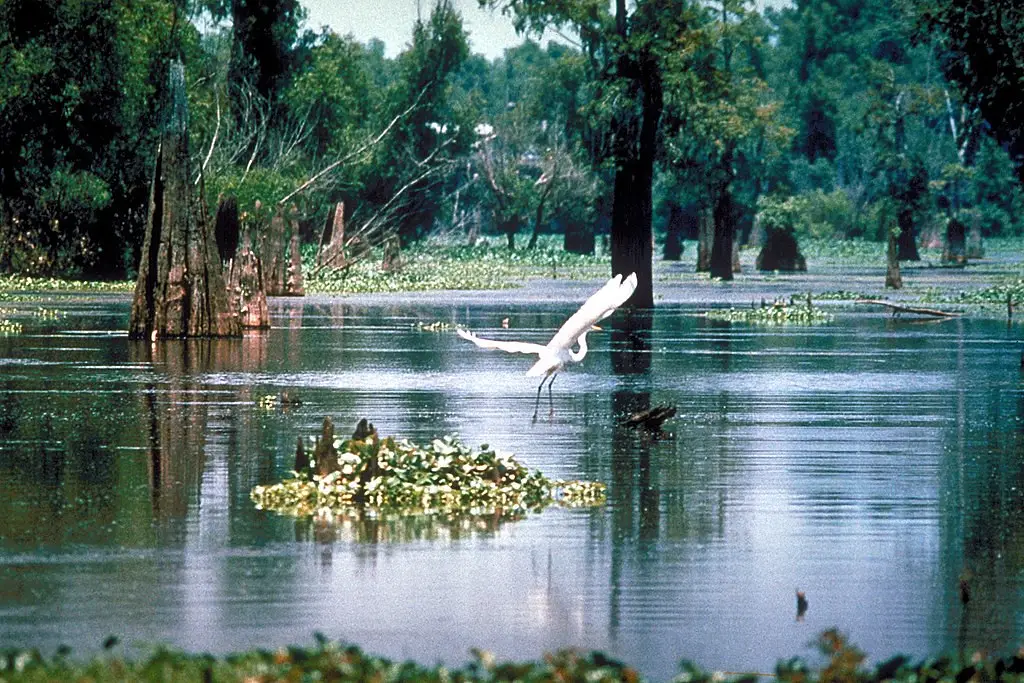
Louisiana’s Atchafalaya River is one of the most alligator-rich waterways in the United States. This river flows through the Atchafalaya Basin, the largest swamp in North America, which covers over 1 million acres of wetlands. According to Atchafalaya Basin Landing Airboat Swamp Tours, the Atchafalaya Basin is a labyrinth of slow-moving rivers, swamps, and marshes, providing the perfect environment for alligators to thrive. These reptiles can be found basking on the muddy banks, swimming in the shallow waters, or lurking in the dense vegetation that lines the river. The river’s rich ecosystem, which includes cypress swamps and backwaters, offers abundant shelter and food for alligators, including fish, small mammals, and birds. The warm, humid climate of Louisiana ensures that the Atchafalaya River remains an alligator haven throughout the year.
The Atchafalaya Basin is also home to a variety of other wildlife, making it an important ecological area. The swamp’s remote nature and low human population density mean that alligators can roam freely without much disturbance. Visitors can take boat tours through the basin to get a closer look at the alligators in their natural habitat. While alligator sightings are common throughout the basin, the lower Atchafalaya River, where the water is more stagnant, offers the best chances of spotting these reptiles. The Atchafalaya River remains a key location for alligator conservation and offers a truly wild, untouched environment for these incredible creatures.
3. Texas’ Brazos River
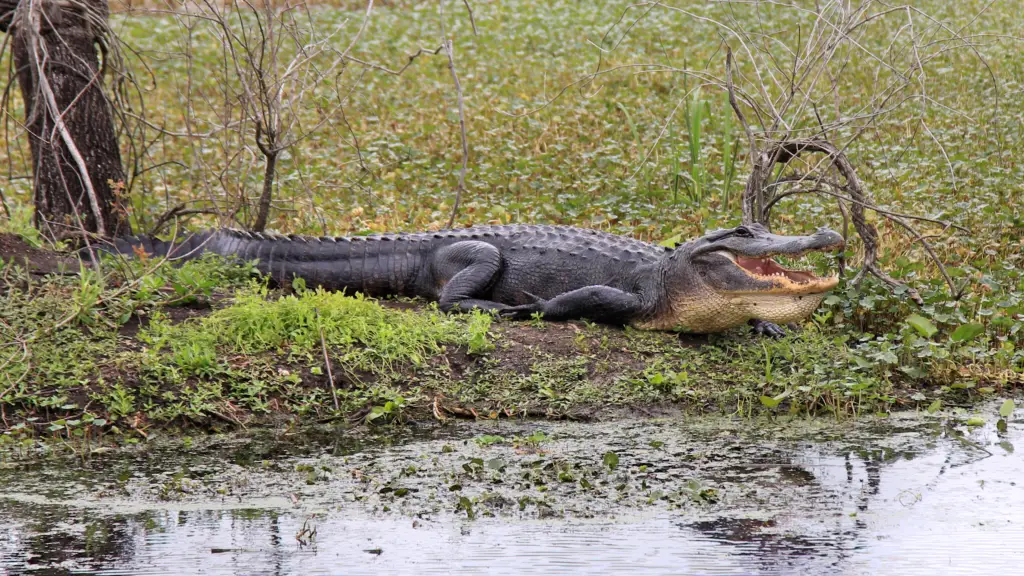
According to the Brazos River Authority, the Brazos River in Texas is one of the largest and longest rivers in the state, stretching over 800 miles from the northern part of the state to the Gulf of Mexico. As it flows southward, the river meanders through a diverse range of habitats, from clear, rocky streams to slow-moving, swampy areas that are perfect for alligators. The lower reaches of the Brazos River, near the Gulf Coast, are particularly rich in alligator populations. These reptiles are often spotted basking along the riverbanks or cruising in the slow-moving waters. The river’s numerous tributaries, marshes, and wetlands provide abundant food for alligators, including fish, amphibians, and small mammals. The warm waters of the Brazos River support alligator populations year-round, and sightings are especially common during the summer months when the water temperature is ideal.
The river’s dense vegetation, including cypress trees and thick undergrowth, offers perfect cover for alligators to hide and hunt. One of the highlights of the Brazos River is its ability to support alligator populations in a variety of environments, from freshwater marshes to saltwater estuaries. While the upper sections of the river are less populated with alligators, the lower stretches and its many backwaters provide the perfect conditions for these reptiles to thrive. The Brazos River is also a popular destination for wildlife enthusiasts and photographers looking to capture the beauty of alligators in their natural habitat.
4. Georgia’s Altamaha River
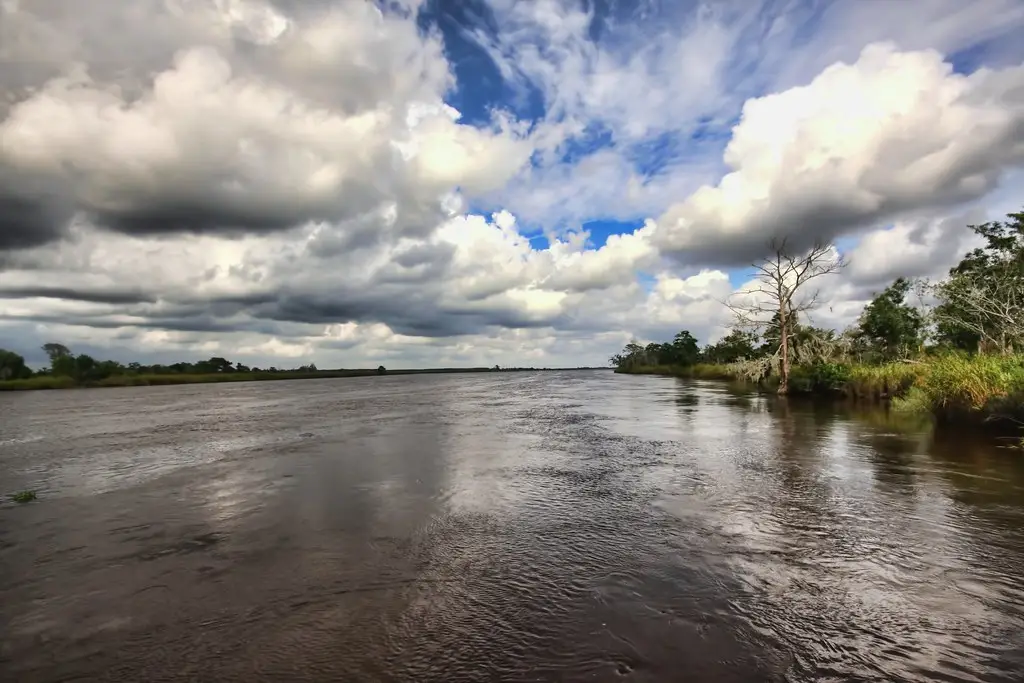
The Altamaha River in Georgia is a meandering waterway that flows through one of the most ecologically diverse regions in the southeastern United States. According to the Georgia River Network, this river, which stretches over 130 miles, passes through a variety of habitats, from freshwater swamps to saltwater marshes, making it a prime location for alligators. The river’s slow-moving waters and abundant wetlands provide the perfect environment for alligators to thrive. These reptiles can be seen basking on the banks of the river, swimming in the shallow waters, or lurking in the dense underbrush that lines the river’s edge. The Altamaha River is also home to a wide range of other wildlife, including birds, fish, and mammals, which serve as food for alligators.
The river’s proximity to the Atlantic Ocean ensures that its waters remain warm, creating an ideal environment for alligators to live year-round. Alligator sightings are common throughout the river, especially in the areas near the river’s estuaries, where freshwater meets saltwater. The Altamaha River flows through rural areas of Georgia, where human development is limited, allowing alligators to thrive in their natural habitat without significant disturbances. The river also features several protected areas, such as the Altamaha Wildlife Management Area, which helps conserve the local alligator population. For those seeking a chance to see alligators in the wild, the Altamaha River offers some of the best opportunities for close-up encounters.
5. Mississippi’s Pearl River

The Pearl River runs through both Mississippi and Louisiana, providing a vital water source for the surrounding wetlands and ecosystems. The river is particularly known for its high alligator population, which thrives in the slow-moving waters and swampy backwaters of the region. The Pearl River meanders through dense forests, cypress swamps, and marshes, creating an ideal environment for alligators to live and hunt. These reptiles are commonly spotted basking on the riverbanks or swimming lazily through the water, especially in the more secluded parts of the river. The abundant food supply, including fish, amphibians, and small mammals, ensures that the alligator population remains healthy and robust. The river’s warm waters, especially during the summer months, support alligator activity year-round.
Because the Pearl River flows through remote areas of Mississippi and Louisiana, it provides alligators with a habitat that is relatively free from human interference. The river also features several protected areas, such as the Pearl River Wildlife Management Area, as discussed by the MDWFP, where alligator populations can thrive without disturbance. The Pearl River is a great location for boat tours or wildlife viewing, as alligators are frequently spotted along the riverbanks and in its many backwaters. The dense vegetation and quiet, slow-moving waters of the Pearl River make it one of the top rivers for alligator sightings in the region.
6. South Carolina’s Savannah River
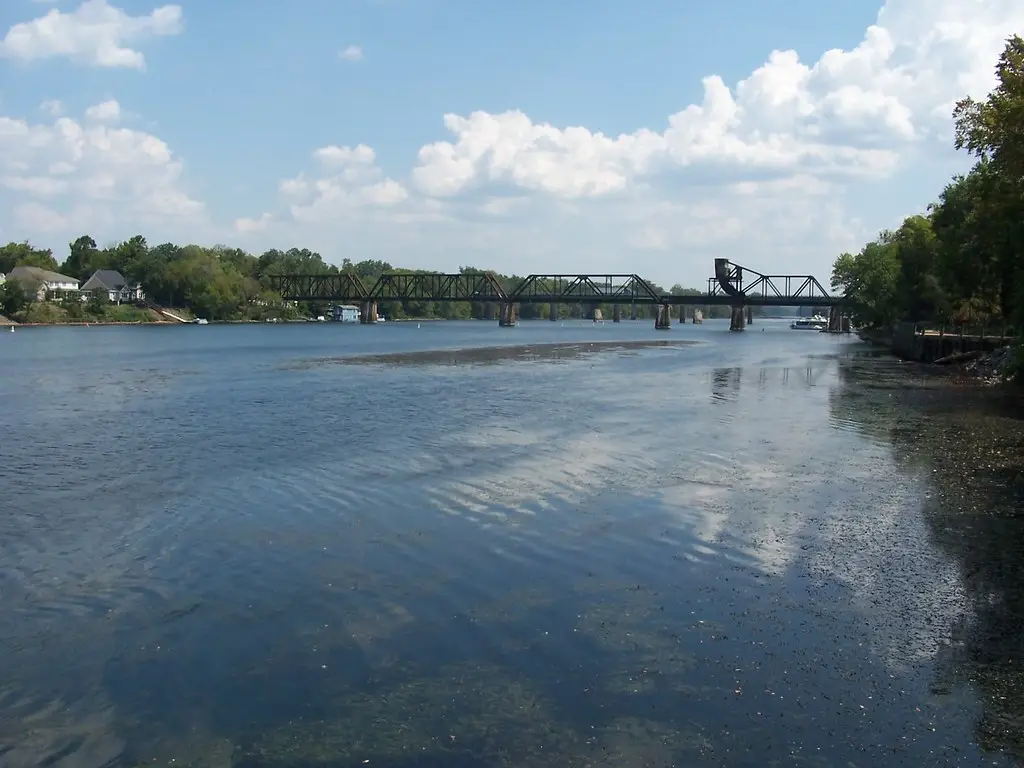
The Savannah River is a key waterway that forms part of the border between South Carolina and Georgia. This river, which flows from the foothills of the Appalachian Mountains to the Atlantic Ocean, provides a variety of habitats for alligators. The river’s lower stretches, particularly in its marshy areas near the coast, are rich with alligator populations. Alligators can be spotted basking on the riverbanks, swimming in the shallow waters, or lurking in the dense vegetation that grows along the river’s edge. The warm, humid climate of the region, combined with the slow-moving, sheltered waters of the Savannah River, provides an ideal environment for alligators to thrive year-round.
The river’s surrounding wetlands and marshes are teeming with fish, birds, and small mammals, which serve as a steady food supply for alligators. Because the Savannah River flows through relatively undeveloped areas, it offers a natural habitat where alligators can live with minimal human interference. Alligator sightings are common in the more remote sections of the river, where human activity is less frequent. Visitors can explore the river via boat tours or hikes through its protected areas, such as the Savannah National Wildlife Refuge, where alligators are often seen in their natural habitat. The Savannah River offers excellent opportunities for wildlife viewing, especially for those interested in observing alligators in the wild.
7. Alabama’s Mobile River
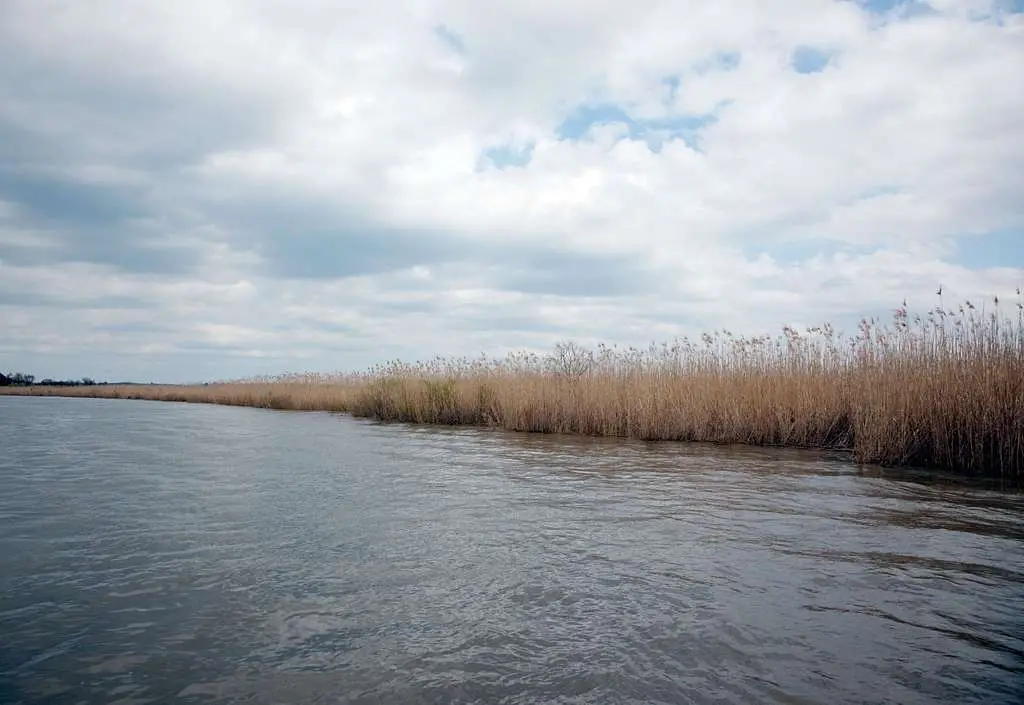
The Mobile River in Alabama is a major waterway that flows through the Gulf Coast region. The river’s slow-moving waters and surrounding wetlands create an ideal environment for alligators to thrive. The Mobile River is part of a larger river system that includes the Tombigbee and Alabama Rivers, which feed into the Gulf of Mexico. These interconnected waterways provide alligators with ample space to roam and hunt. The river’s many backwaters, marshes, and swamps offer dense vegetation and shelter, allowing alligators to live and hide easily. The warm temperatures of the region ensure that the Mobile River’s waters remain suitable for alligators throughout the year. These reptiles are frequently spotted basking on the riverbanks or swimming through the calm waters, especially in the more remote sections of the river.
The Mobile River is also home to a variety of other wildlife, including birds and fish, which provide food for the alligators. Visitors to the Mobile River can experience alligator sightings while kayaking or boating along the river. The river’s low population density and large areas of protected wetlands ensure that alligators have plenty of room to thrive. The Mobile River is one of the top destinations in Alabama for alligator enthusiasts and nature lovers alike.
8. North Carolina’s Cape Fear River

The Cape Fear River in North Carolina flows from the piedmont region of the state to the Atlantic Ocean, passing through a variety of landscapes along its 200-mile journey. The river is home to a moderate population of alligators, particularly in its lower stretches near the coast, where the water is warm and slow-moving. Alligators are often spotted basking along the riverbanks or swimming in the quiet backwaters that are common along the Cape Fear. The river’s ecosystem includes wetlands, swamps, and marshes, which provide alligators with both food and shelter. The dense vegetation along the river offers ample cover for alligators to hide, while the warm, shallow waters provide the perfect conditions for these reptiles to thrive.
Though alligators are less abundant in the upper reaches of the river, sightings become more frequent as the river flows closer to the coast. The river’s proximity to the Atlantic Ocean ensures that the water temperature remains ideal for alligators year-round. The Cape Fear River’s secluded marshlands make it a great place to observe alligators in their natural habitat without the interference of heavy human activity. For those visiting the river, boat tours and hiking trails provide opportunities to view these ancient reptiles in the wild. The river’s peaceful surroundings, combined with the abundance of wildlife, make it a must-see destination for alligator enthusiasts.
9. Missouri’s Black River
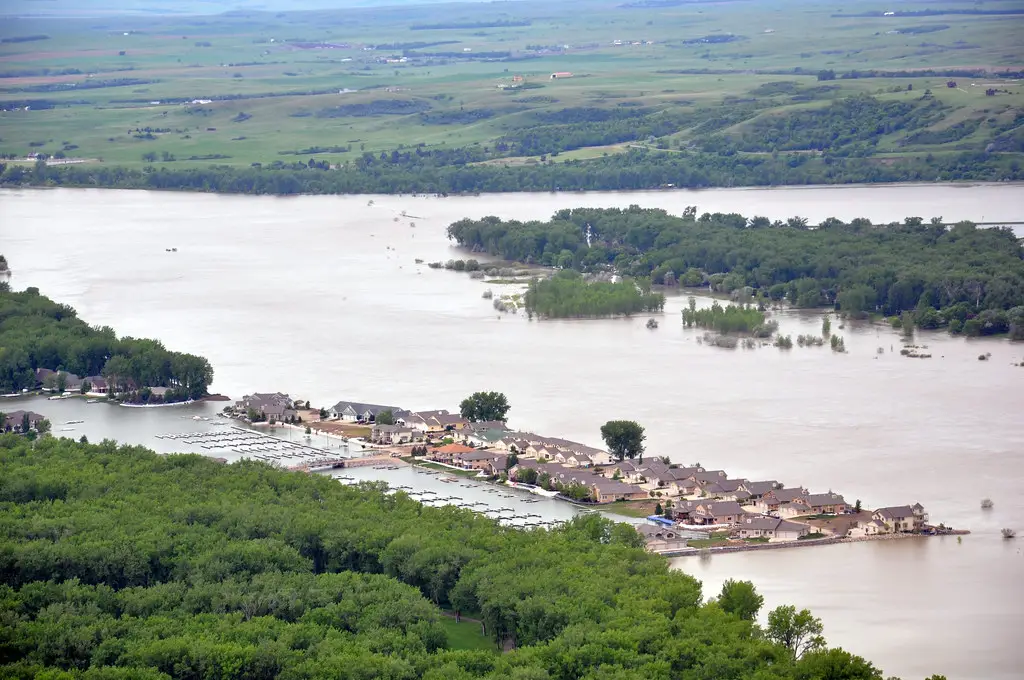
Missouri’s Black River is an unexpected home for alligators, as the river flows through a temperate climate in the central U.S. However, the Black River, particularly in its southern stretches, supports a small but growing population of alligators. The river’s slow-moving waters, combined with dense forests and wetlands, provide the perfect habitat for these reptiles. Although alligator sightings are less frequent in Missouri compared to the southern U.S., the Black River’s warm, shallow waters offer an ideal environment for these reptiles, especially during the summer months. The river’s remote nature and lack of human development in some areas ensure that alligators can live without significant disturbances. The river flows through the Ozark Mountains, offering picturesque landscapes and an unspoiled natural environment where alligators can thrive.
Visitors to the Black River are more likely to spot alligators in the lower portions of the river, where the water is warmer and slower-moving. The river is also home to various other species of wildlife, including birds and fish, providing a balanced ecosystem for alligators to hunt and flourish. The Black River’s swampy backwaters and secluded coves are prime alligator habitats, offering plenty of food and shelter for these fascinating reptiles. Although alligator sightings may be rarer in Missouri than in other states, the Black River remains one of the few places in the state where these reptiles can be found in the wild.
10. Arkansas’ Arkansas River
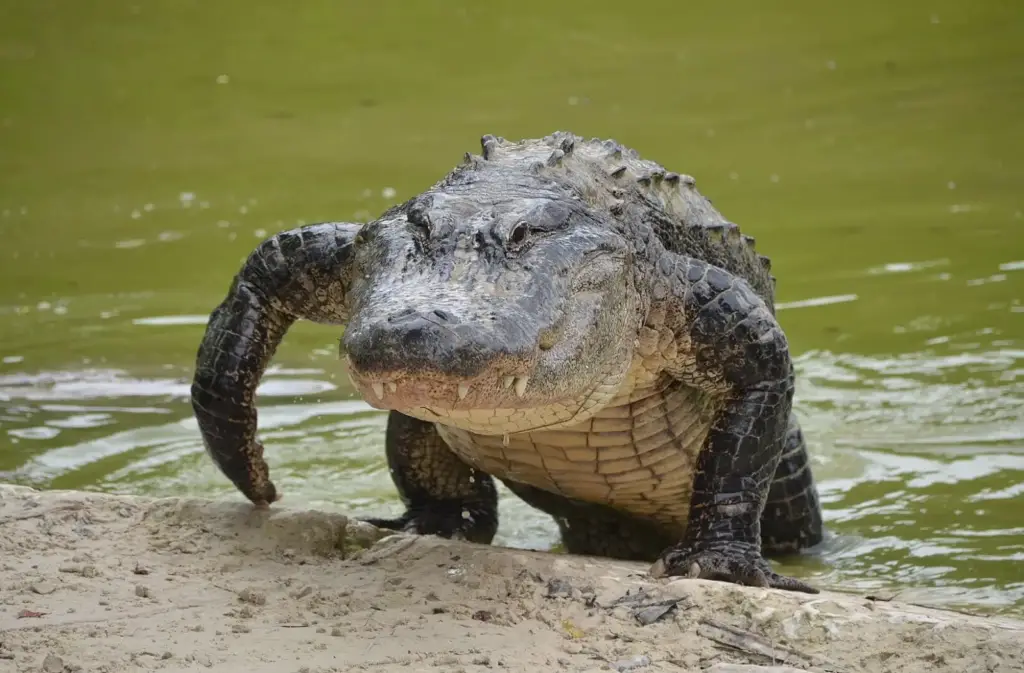
The Arkansas River is a major waterway that flows through the central United States, passing through Colorado, Kansas, Oklahoma, and Arkansas. While it is better known for its agricultural importance and scenic beauty, the Arkansas River is also home to a moderate alligator population, particularly in its lower stretches near the Mississippi River. The river’s warm, slow-moving waters create a suitable environment for alligators, especially during the warmer months when temperatures rise. The Arkansas River’s wetlands and marshes provide ample food and shelter for alligators, making it an ideal location for them to live and thrive.
These reptiles are commonly spotted in the river’s more secluded sections, where human activity is minimal. The river flows through both urban and rural areas, but the remote parts of the river are more likely to feature alligators. The Arkansas River’s quiet, meandering waters are the perfect habitat for these reptiles to thrive, as they provide ample opportunities for basking, hunting, and breeding. While the Arkansas River is not as famous for its alligator populations as some of the other rivers on this list, it still offers a unique opportunity to encounter these ancient creatures. The river’s gentle flow and surrounding wetlands make it a great destination for wildlife enthusiasts and photographers looking to capture alligators in their natural environment.


